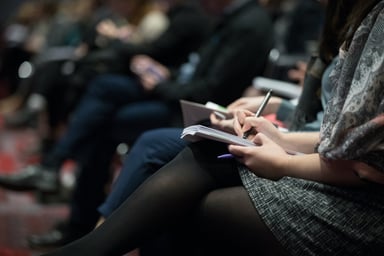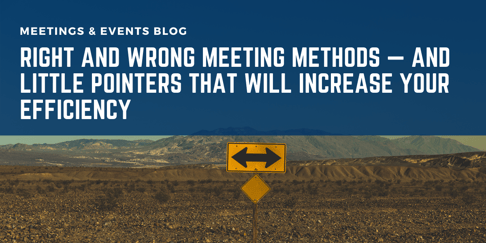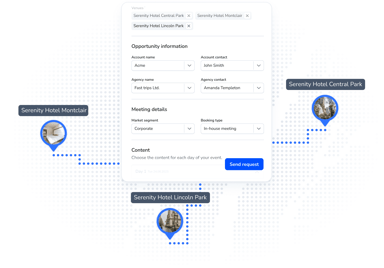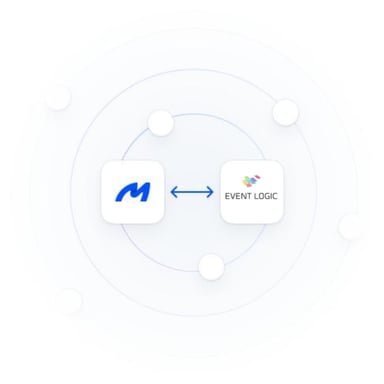
MeetingPackage
As we all know by now, many people think that meetings are useless. There are attendees who describe meetings as ineffective, a waste of time and useless.
However, meetings are very important. It is how companies and businesses maintain themselves. It is an important tool for idea gathering, information dissemination and most of all it’s a forum where an organization tells their members that they matter.
If people think meetings are boring, then perhaps there’s something wrong with how the meeting is organized. Maybe attendees think meetings are boring because the organization itself is boring. Whatever the reason is, meeting quality can be improved so that it provides value to the attendees.
Here are good and bad examples of meeting methods and how you can improve your team’s efficiency.
Wrong Meeting Methods
Not Taking Meetings Seriously
Since many people think that meetings are useless and boring, most of them don’t take meetings seriously. They arrive late or even conduct meetings without agendas or structure.
This is a perfect way to make attendees feel that meetings are useless and a waste of time. Meetings are supposed to be a gathering of professionals who want to share ideas to make their company grow. If attendees are late it means that they have no respect for the time of the other participants or the company.
If you want meetings to take off on the right foot, start meetings on time. If the email says it will start at 10 am then attendees should be at the venue 10 minutes early. There should also be a clear agenda. What’s the meeting about? What does it plan to accomplish? Who will be presiding the meeting? Who will do the talking?
Once you have this down, everybody will start taking meetings seriously. They will think that meetings are “real work”. Participants just want to get something valuable out of a meeting so that they feel that it’s not a waste of time.

Starting on time means you get more done during the work day.
Meetings Take Too Long
Always remember that time is of the essence. You don’t want to waste your co-workers’ time; so meeting should not only start on time, they should also end on time.
There are speakers who have a bad habit of rambling and going off course. A good solution to this is to keep speakers on a timer. Always remember that the sooner the meeting ends, the faster attendees can execute the meeting’s goal.
A good rule of thumb is to keep meetings below the 90-minute mark. The meeting chair should not only keep track of time but also remind speakers their time limit to make meetings more efficient. Monitoring speaking time is important since some speakers can go off topic.
No Actionable Goal
Attendees want to leave meetings with 2 feelings. First they want to feel that they have accomplished something and the second is they want to feel motivated to take action.
Attendees who attend meetings without agendas usually feel like the meeting was a waste of time. This is because they don’t have a goal to accomplish or they don’t have anything they want to accomplish after the meeting ended. This is why meetings should have a purpose.
If the purpose of the meeting is to share information, attendees should leave the meeting knowing what to do with the info they received. If the purpose is for brainstorming, participants should feel that they have contributed to the project.
Right Meeting Methods
Participation Method
There are many employees who think that there are attendees that should be attending a meeting. These irrelevant attendees are wasting their time and this type of problem should be tackled by the people or person organizing the meeting.
Because many attendees already think that meetings are a waste of time, people who are invited to meetings are those that really need to be there. The participation method is based on the idea that every single attendee to a meeting should be able to contribute directly and participate.

When planning a meeting consider inviting only the people who are likely to make contributions and have a direct impact on the meeting. This is a good way to facilitate greater discussions from those who have good ideas. However, participation does not only mean speaking during the meeting. It could also mean taking minutes, assisting the speaker or leader of the meeting, providing resources or making sure that attendees are comfortable.
Consider The Low-Tech Method
In today’s digital world, technology plays a big part in meetings. We are used to seeing laptops, projectors, video conferencing and other tech during meetings. All these gadgets have helped make meetings more productive and efficient.
However, studies conducted by Princeton University suggests that people naturally absorb more information and gain more knowledge through conceptual understanding when they are taking notes from a live speaker compared to listening to somebody on a laptop or video.
This is not to say that you have to get rid of technology during your meetings. Technology will always have a place in the conference room. Video conference calls and video presentations will always be valuable. However, note taking and a “no laptop” policy can help improve retention and boost efficiency of attendees.
Follow-Up Method
Despite having an agenda and implementing a speaking timer, speakers and participants can often go out of topic. This is natural because you have a room full of people who are discussing ideas and it is natural for them to verge into different topics and everybody gets off track.
This is where you need to implement the follow-up method. It allows you to acknowledge less favorable ideas instead of disregarding them completely. It’s very easy to do. Whenever the topic goes off tangent, it is marked “for follow-up” so that you can get back to the main discussion and then come back to discuss the off tangents at a later date.
Tips To Improve Meeting Efficiency
According to research, the average professional attends around 62 meetings per month and half of the time spent in meetings is actually wasted.
This is why many people hate meetings. The good news is that you can make co-workers and attendees like meetings by increasing their efficiency. Here are some tips:
Always Make A Detailed Meeting Agenda
For every topic on the agenda write the speaker and timing. Inform attendees the time, what they need to prepare and the topics up for discussion or the reason for the meeting. This will help participants know what is expected of them.
A detailed agenda will also help you keep the meeting on track. As stated above, meetings tend to go off tangent and an agenda will help keep discussions from becoming too long.
Less Is More When It Comes To Attendees
This is an extension of the participation method. All attendees want to feel involved during a meeting. This means that attendees should be people who need to be in the meeting.
Before inviting everybody at the office, think who needs to be there. For instance, if it’s a meeting to make decisions, make sure that all the decision makers in the company attend. If you are sharing information, think of the people who will benefit or need the information or those that are good at sharing instead of having everybody in the room.
Consider The Objective Of The Meeting
One of the easiest ways to screw up a meeting is by not having a purpose. We already know that many people think meetings are a waste of time and not having a purpose is driving a nail into the coffin.
Before calling a meeting, always consider carefully its purpose. Why are we having a meeting? Are we meeting because we want to share information? Is it a brainstorming session? Is it to gather feedback? Are we here to make decisions?
The sooner you know why you’re calling a meeting, the faster you can come up with an agenda.
Leave Phones Outside The Conference Room
Former US President Obama used to have a no cellphone-policy during his meetings. Participants were asked to leave their phones on a basket before they entered the Oval Office or any meeting venue with him.

This is because cellphones are a distraction. We spend a lot of time on them and we can’t seem to take our hands off them even during meetings. Having a no cellphone policy during meetings can boost attendee concentration, participation and attention. When their phones are off, their attention is focused on the speaker or agenda. This translates to better understanding and retention which then also leads to better efficiency and execution of meeting goals.
Meeting Minutes & Action Logs
The minutes of the meeting has a purpose. To record what has been tackled during the said meeting. However, it does not really accomplish a lot since it’s just a black and white recording of a meeting.
In most meetings, there will be decisions that need actions. Most of the time, these decisions are embedded in the minutes of the meeting without a clear path of action. There are also times when decisions are not clearly documented which leads to confusion.
Aside from having a minutes of a meeting, ask somebody to take down action logs as well. This is basically a log of all decisions made and the actions needed to complete said decisions. Having an action log will help you communicate what needs to be done, when they need to be accomplish and who needs to do them.
Action logs are designed to take confusion away from decisions and to make sure that a meeting is able to meet its goals.
Wrap Up
Are business or company meetings dead? Absolutely not!
Some people might find them boring and useless but they are a very important and big part of a business. When done correctly, business meetings make employees feel needed, trusted and valuable.
Meetings help co-workers to collaborate better. Google Drive is great, but some things are better with human interaction. Since most of our communication as humans are non-verbal, we need to be in the same room to communicate effectively. It is a good tool to help strengthen the team. It helps to improve teamwork because you are sitting together in 1 room.
Most importantly, face-to-face meetings are also best for resolving issues. Conflict resolution meetings are best held face-to-face because it’s hard to show another party you’re not a threat on email. If you want to improve relations or other people’s perspective of you, call a face-to-face meeting.
Meetings are like fuel that help to run a company because they provide co-workers a venue to contribute their ideas. At the same time, companies need meetings to communicate to employees their expectations, needs and wants.
Also read these blog posts:




